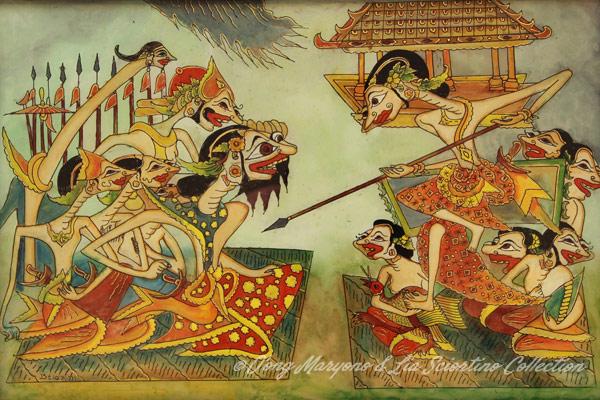| Description |
This and other similar paintings take the illustrations from the wayang beber, narratives in the form of illustrated ballads on scrolls, which were documented in the 15th century and are nearly vanished today. Ancient scrolls can be found in museums and two sets hand-painted on hand-made bark cloth, are owned by families who inherited them from many generations ago, in Pacitan and Wonogiri in Central Java. Performances, mostly in small open-sided pavilions or auditoriums, take place according to the following pattern. The dalang (puppeteer, narrator) gives a sign, the small gamelan orchestra with drummer and a few knobbed gongs and a musician with a rebab (violin-like instrument held vertically) begins to play and the dalang unrolls the first scroll of the story. Then, speaking and singing, he narrates the episode in more detail unrolling several scrolls one at a time in the course of the evening. Each scene in the scrolls represents a story or part of a story. The content of the story typically stems from the Panji romances which are semi-historical legends set in the 12th-13th century East Javanese kingdoms of Jenggala, Daha and Kedhiri, and also in Bali (Adapted and quoted from https://worldstories-edi.blogspot.com/2010/12/wayang-beber.html). |

